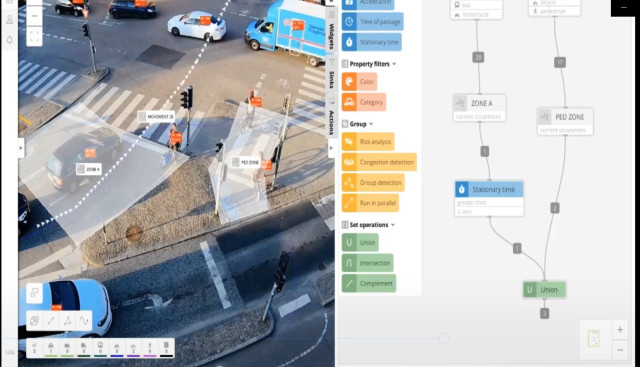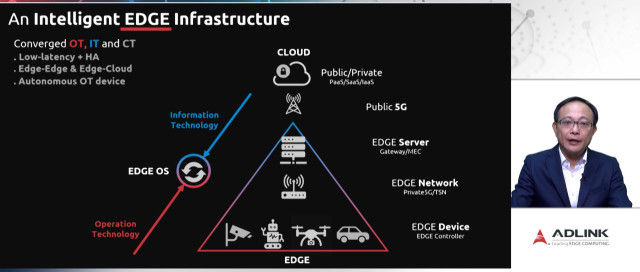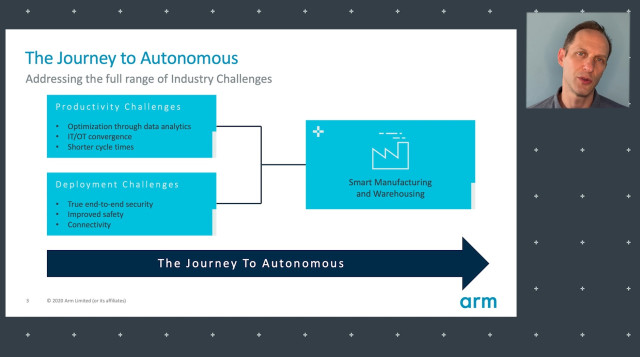What is ‘Datafication’? Is that even proper English? Apparently, it is now.
In the technology industry, we’re used to lots of acronyms. We’re also used to hearing new phrases that both startups and established companies would love us to adopt as industry naming. It gives a kind of hidden sense of pride in having invented the term.
So, when reviewing the presentations submitted for next week’s Boards and Solutions 2020 virtual conference (13-14 October 2020), the one term I picked up as a possible new mantra is ‘datafication’. More specifically, as Charbel Aoun, EMEA business development director for smart cities at Nvidia, describes the four megatrends that will significantly impact our lives, he explains that with 8,000 new IoT devices connected every 60 seconds, “Digitization has enabled datafication.”
Upcoming Event
Boards and Solutions Virtual Conference & Exhibition: October 13-14, 2020
He adds, “IoT could turn the world into data that could be used to make macro decisions on resource utilization. Information is a great way to reduce waste and increase efficiencies. That is really what the internet of things provides. This was the vision of Kevin Ashton back in 1999, the father of the term IoT. Today, this vision is becoming a reality.”
Indeed, data is everything, and not just at the edge, but also in the data center, as Nvidia revealed more details of its data processing unit (DPU) at its GTC conference.
Aoun describes the march of datafication in his talk, as he talks about the big challenge for smart cities as an example. “There’s around one billion cameras worldwide, recording 24/7, generating a huge amount of data. It is basically impossible for humans to process such amounts of data. To give you an idea, with one 1080P resolution camera, H.264 I at 34 fps, will generate 47Gbytes of data in 24 hours and 17 Terabytes of data in one year. On the other hand, one CCTV operator can focus for 30 minutes while looking at 4-16 video streams at the same time. Which means for every 100 screens or 100 streams you want to monitor, you need six operators. To understand the scale of the challenge, let us look at the number of CCTVs in the city. In Shanghai, one million plus CCTVs, London, 500,000, Moscow, 200,000, L.A. 25,000, Berlin 20,000.”

In his paper, Charbel Aoun of Nvidia illustrates how AI offers city managers new solutions to 21st century urban challenges with some practical examples. (Image: Nvidia / Boards and Solutions Conference 2020)
“Now you get the picture of the volume of data that can be generated from all the cameras in a city, and the amount of resources required to maintain and monitor.” In his paper, “How AI can make cities smarter – Powering AI City with IVA”, Aoun talks about how AI is helping make sense of the information overload in very effective and efficient ways, provides insight and enables real time decision making to enhance the lives of citizens. He illustrates how AI offers city managers new solutions to 21st century urban challenges with some practical examples.
Value will come from edge autonomy
While all this data being generated needs to be processed and analyzed to provide the insights and enable actions, how about if the edge devices themselves are able to intelligently make decisions? This is the premise of the paper, “Insights into edge autonomy – the future of edge computing”, presented by Jim Liu, CEO and founder of ADLINK Technology. He explains that since the majority of data is collected at the edge, the edge is where the actions should also be decided, using the principle of ‘edge autonomy’.

Jim Liu from ADLINK Technology explains the importance of an intelligent edge infrastructure in enabling edge autonomy (Image: ADLINK Technology / Boards and Solutions Conference 2020)
He said, “We believe the future of edge is autonomy. And value is achieved at the edge. The edge is the most efficient and effective location for data analytics and control.” He explains edge autonomy and its sub-division into core autonomy and swarm autonomy. He said that core autonomy is focused on making a single machine smart and intelligent. But it’s not enough to have an individual machine smart or even machine-to-machine is not enough. “If you want to fix the efficiency issue, or you want to get benefits, you have to consider how you can make sure all these machines, and people, and even utilities, connect together and ‘co-work’ together. This is what we call ‘swarm autonomy’. That is the end [aim] of edge computing. It’s about how they can support operational efficiency and get more and more benefit.”
Liu explains that swarm autonomy is about making sure all the information collected by edge devices can be transparent and shared [referring to the ‘swarm’ of intelligent machines]. If edge devices are able to share of information and data between themselves, they can create a shared intelligence and hence more autonomy at the edge.
Autonomy will drive industrial innovation
Autonomous decision making is also going to be a key part of the future in industrial automation innovation, as John Heinlein vice president for high performance IoT, automotive and IoT line at Arm, explains in his paper, “Accelerating Innovation in Industrial Automation”.
Talking about the three distinct segments in smart manufacturing and warehousing from classic automation, industrial IoT and robotics, he said, “In all of these, we’re seeing a trend towards more and more autonomy and more and more autonomous decision making, and that’s going to be important in the future.”

John Heinlein from Arm will talk about the journey to autonomous decision-making in industrial automation (Image: Arm / Boards and Solutions 202 0Conference)
“With these trends in mind, we believe there’s a growing trend towards something we call a journey to autonomous, where we believe with a couple of key challenges addressed, we can get to the smart manufacturing and warehousing of the future.”
He adds that there is no industry that will not be favorably benefited from better data capture and better data analytics.
So, there we have it. It’s all about the data. Or should I say, datafication?
For more details about the Boards and Solutions virtual conference taking place on 13-14 October 2020, and to register for free attendance, click here.
Covering three tracks over two days, the Boards and Solutions Virtual Event, will look at trends and products in industrial automation, smart cities and edge computing. The topics and speakers include:
- Accelerating Innovation in Industrial Automation, John Heinlein, vice president, high performance IoT, automotive and IoT line, Arm
- Embedded Processing Solutions at the Edge: not your Father’s MCU, Philippe Magarshack, technology R&D group vice president and general manager of central CAD and design solutions, ST Microelectronics
- Fundamentals of Success for Industrial Automation Innovation in the 5G Era, Hitoshi Shirakabe, vice president, marketing, enterprise infrastructure business division, IoT and infrastructure business unit, Renesas
- How AI can make cities smarter – Powering AI City with IVA, Charbel Aoun, EMEA Business Development Director, Smart Cities, Nvidia
- Evolution of Cybersecurity Legislation Across IoT, Haydn Povey, CEO, Secure Thingz, and general manager embedded security Solutions, IAR Systems
- Why zero touch onboarding and provisioning is vital for secure smart cities, Bobby Vale, head of IoT platforms and ecosystem, Advantech
- Insights into edge autonomy – the future of edge computing, Jim Liu, CEO and founder, ADLINK Technology
- AI Edge Streamline Solution into your Embedded Platform, Gian Claudio Lolli, sales director Aaeon South Europe, AAEON
- Industry 4.0 at the Edge – A Crucial Move for Manufacturing, Jeff Sharpe, director, IoT & 5G embedded solutions, Supermicro
Advertisement
Learn more about ADLINK TechnologyARMNVIDIA





